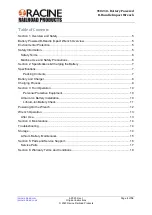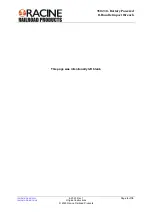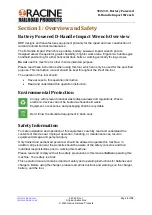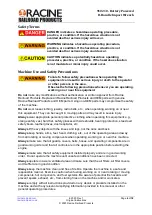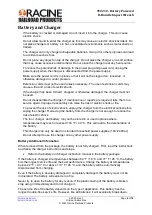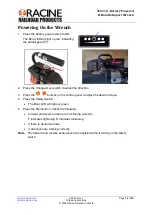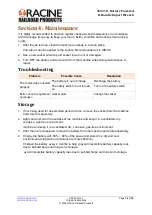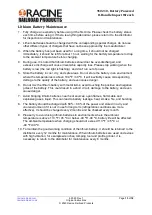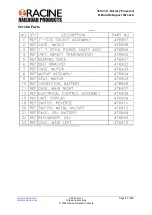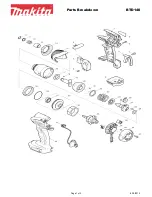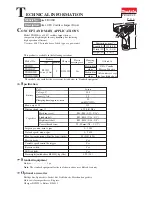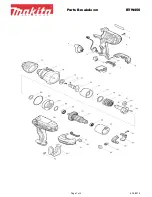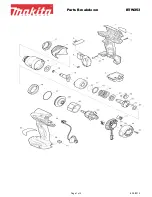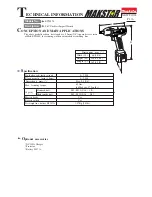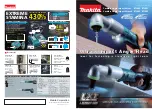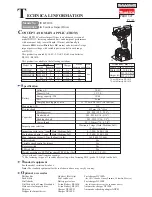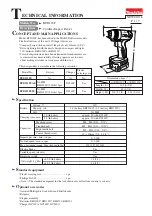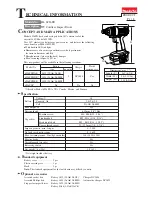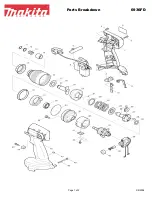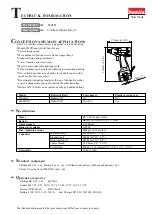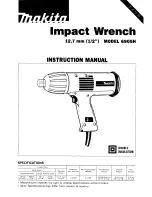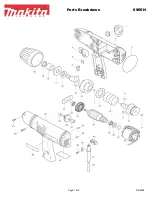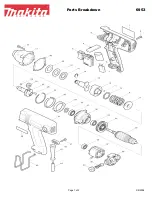
910210 - Battery Powered
D-Handle Impact Wrench
racinerailroad.com
racinerailroad.co.uk
6.2023 Rev. 1
Original Instructions
© 2023 Racine Railroad Products
Page
8
of
18
Battery and Charger
If the battery is cracked or damaged, do not insert it into the charger. This can cause
electric shock.
Do not allow liquid to enter the charger as this may cause an electric shock accident. Do
not place chargers or battery s in hot, unventilated environments such as metal sheds or
trailers.
The charger can only charge rechargeable batteries. Using it for other purposes can lead
to accidents such as fires.
Do not place any object on top of the charger. Do not place the charger on a soft surface
that may cause excessive internal heat. Do not place the charger near any heat source.
To reduce the potential risk of damage to the power plug and power cord, unplug the
power supply when the charger is disconnected from the power supply.
Make sure the power cord is in place so that it will not be stepped on, loosened, or
otherwise damaged or under pressure
Extension cords must not be used unless necessary. The use of extension cords may
cause a fire and a risk of electric shock.
If the charger has been hit hard, dropped or otherwise damaged, the charger must not
be used.
Do not disassemble the charger. If maintenance or repairs are required, take them to a
service agent. Improper reassembly can raise the risk of electric shock or fire.
To prevent the risk of electric shock, unplug the charger from the electrical outlet before
wiping the charger. Removing the battery from the charger is not enough to reduce the
risk of electric shock.
The tool, charger, and battery may not be stored in or used in places where
temperatures may reach or exceed 104 °F / 40 °C. This will lead to the deterioration of
the battery
.
This charger can only be used on standard household power supplies (100~240Vac)
.
Do not attempt to use the charger on any other power supply.
Battery Additional Information
When removed from the package, the battery is not fully charged. First, read the instructions
and follow the charger instructions and steps.
•
Refer to the battery and charger instruction manual in the battery package.
If the battery is charged in temperatures between 64 °F / 18 °C and 77 °F / 25 °C, the battery
has the longest service life and the best performance. Charge the battery at temperatures
below -22 °F / -30 °C or above 113 °F / 45 °C, and the battery will be automatically
disconnected from charging.
Even if the battery is severely damaged or completely damaged, the battery must not be
incinerated. The battery will explode in a fire.
Never try to open the battery for any reason. If the plastic casing of the battery is broken,
stop using it immediately and do not charge it.
The service life of the battery depends on the type of application. This battery has the
longest trouble-free service life. However, like all batteries, it will eventually break down.



